
17 minute read
NowHearThis!
We are regionally focused in the West and we work to promote business development for our customers.
We attend the trade shows with a Booth and publish every two months with magazines for (AZ, NM, NV), (CO, UT, ID, MT, WY), (WA, OR, CA), print & digital...
Contact us today, we’ll get the word out for you with a story on your company, with an advertisment that we will create for free for you, an email blast with your content that goes to near 25,000 decision makers in our industry, or a business card ad in our ‘Buyer’s Guide’.
Call Today: 480-773-3239, kim@a2zMFG.com
The systems bound for Australia are going to Energy Storage IndustriesAsia Pacific, or ESI. After the initial 10 systems, 10 more “will follow in coming weeks,” ESI said. Meanwhile, ESI is building a plant to assemble iron-flow batteries using core components manufactured in Wilsonville.
CFM and Rolls Land Massive Orders from Air India
Two jet-engine builders confirmed their contracts to supply nearly 900 turbofans to power the planned, $80-billion upgrade and expansion of the Indian airline.
Following the ambitious plans announced by Air India to acquire 470 new aircraft to expand and modernize its global fleet, the carrier has extended order to CFM International and Rolls-Royce for a total of 880 new aircraft engines to power the various Airbus and Boeing jets.
The fleet-upgrade plan has been estimated at $80 billion, though Air India has not confirmed that total.
CFM International reported it has drawn the largest-ever order for its CFM LEAP engines, to power 210 Airbus A320/A321neo and 190 Boeing 737 MAX family aircraft.The order covers 420 LEAP-1A engines and 380 LEAP-1B engines, plus spares.The airline also contracted for CFM services related to the new LEAP engines.
CFM International is a 5050 venture of GE Aviation and Safran Aircraft Engines, and the developer of the LEAP engine family highbypass turbofan engines. Each partner manufactures the LEAP engines in its own production operations.
Separately, Rolls-Royce announced its own order from Air India for 68 Trent XWB-97 engines, plus options for 20 more engines. Rolls too noted this represents the largest-ever order for the Trent XWB-97, the exclusive power plant for the Airbus A350-1000 widebody aircraft.
Air India also ordered 12 Trent XWB-84 engines, the sole engine option for the Airbus A350-900.
Cutting Tool Demand Rose 14.6% in 2022
Machine shops and other U.S. manufacturers continued to reduce their cutting tool purchases during December 2022, the total dropping -3.1% from November to $188.4 million. It was the second-consecutive month for falling order values, but the December figure was 14.6% higher than the December 2021 total however, and it brought the 12-month total for 2022 to $2.2 billion – a 10.8% improvement over the 2021 total for cutting tool consumption.
A graph comparing the 12-month moving averages for U.S. durable goods shipments and U.S. cutting-tool orders, demonstrating the relation of cutting tools to overall manufacturing activity. The values are calculated by taking the average of the most recent 12 months and plotting them over time. The December 2022 cutting-tool consumption total of $188.4 million fell -3.1% from the November consumption total, but it is 10.8% higher than the December 2021 result.
“Don’t sweat the month-to-month declines in the past two months; the story is in the year-over-year and year-to-date double-digit increases,” offered Pat McGibbon, chief knowledge officer for AMT – the Assn. for Manufacturing Technology. “The next 12 months look bright for 2023 in tooling, as record backlogs in material-removal equipment orders convert into shipments and expanded capacity.”
Cutting tools are consumable products, the purchases of which serve as an index to overall manufacturing activity due to the range of market segments driving machine shops’ purchases. The data is compiled by the U.S. Cutting Tool Institute and AMT – the Assn. for Manufacturing Technology for their monthly Cutting Tool Market Report, which represents actual purchases of cutting tools as reported by manufacturers and distributors that comprise a majority of the domestic market for cutting tools.
The month-by-month direction of cutting-tool consumption, December 2018 to December 2022. For the full 12 months of 2022 cutting-tool consumption totaled $2.2 billion, or 10.8% higher than last year’s January-December total.
The month-by-month direction of cutting-tool consumption, December 2018 to December 2022. For the full 12 months of 2022 cutting-tool consumption totaled $2.2 billion, or 10.8% higher than last year’s January-December total.
“In January, the U.S. labor market had its best month in job hirings since 1969, and cutting tool sales remained steady,” explained USCTI president Jeff Major. “The consensus is that the cutting tool industry looks positive for at least the first six months of this year. Economic pressures still exist, and the Federal Reserve continues to raise interest rates to stave off inflation.”
European F-35 Assembly Center Proposed
Lockheed and Northrop Grumman are studying a partnership with Rheinmetall to establish an F-35 center fuselage integrated assembly line in Germany.
F-35 partners Lockheed Martin and Northrop Grumman agreed to collaborate with Rheinmetall AG to expand manufacturing capabilities for the Lightning II Joint Strike Fighter program in Europe. Specifically, they have identified the possibility of a second Integrated Assembly Line (IAL) for F-35 center fuselage structures in Germany.
No schedule for establishing the new line was announced. “The center fuselage IAL is recognized as a state-of-the-art facility supported by technologies exclusive to Northrop Grumman, seamlessly blending automation with our expertise in aerospace tooling,” according to Northrop’s Glenn Masukawa, vice president and F-35 program manager. “Engaging with Rheinmetall demonstrates our commitment to collaborate with international partners to manufacture advanced aircraft.
Rheinmetall AG is a Dusseldorf-based automotive and military systems manufacturer and supplier.
The F-35 Lightning II Joint Strike Fighter is a single-engine, Stealthenabled aircraft designed for deployment for ground attack and combat, and available in three variants. Last March, the German Defense Ministry selected 35 F-35A conventional takeoff and landing aircraft to replace its current fleet of PA-200 Tornado fighter jets by 2030.The U.S. State Dept. later authorized the sale of the jets, which Germany explained was planned in part to achieve unity with other NATO members deploying the F-35, and to present a “credible deterrent” against Russia.
Other NATO member nations operating or preparing to deploy F-35 fighters include Belgium, Czech Republic, Denmark, Greece, Italy, The Netherlands, Norway, Poland, and the United Kingdom. Unaligned Switzerland and aspiring NATO member Finland also plan to incorporate the aircraft to their defense forces.
Lockheed is the F-35 program leader, and program principal partner Northrop Grumman is the manufacturer of the center fuselage and wing skins. Northrop also develops, produces, and maintains sensor systems, avionics, and aircraft and training software.
“The F-35 program will continue to strengthen our strategic partnership with key industry partners for years to come,” stated Lockheed’s Mike Shoemaker, vice president of F-35 Customer Programs. “The F-35 center fuselage production in Germany will be vital to meet the growing global demand for F-35s, which play a vital role in 21st century security.”

Arcimoto, After Avoiding Closure, Says It Has Restarted Production
By Pete Danko Arcimoto

says it restarted production of the Deliverator, shown here, along with the Fun Utility Vehicle.
Arcimoto (Nasdaq: FUV) is back making electric vehicles a little over a month after it said it halted production amid a severe finance crisis.
“We are excited to announce we have started production on our 2023 FUV and Deliverator with first deliveries starting in March!” the Eugene company told subscribers to company updates on Saturday.
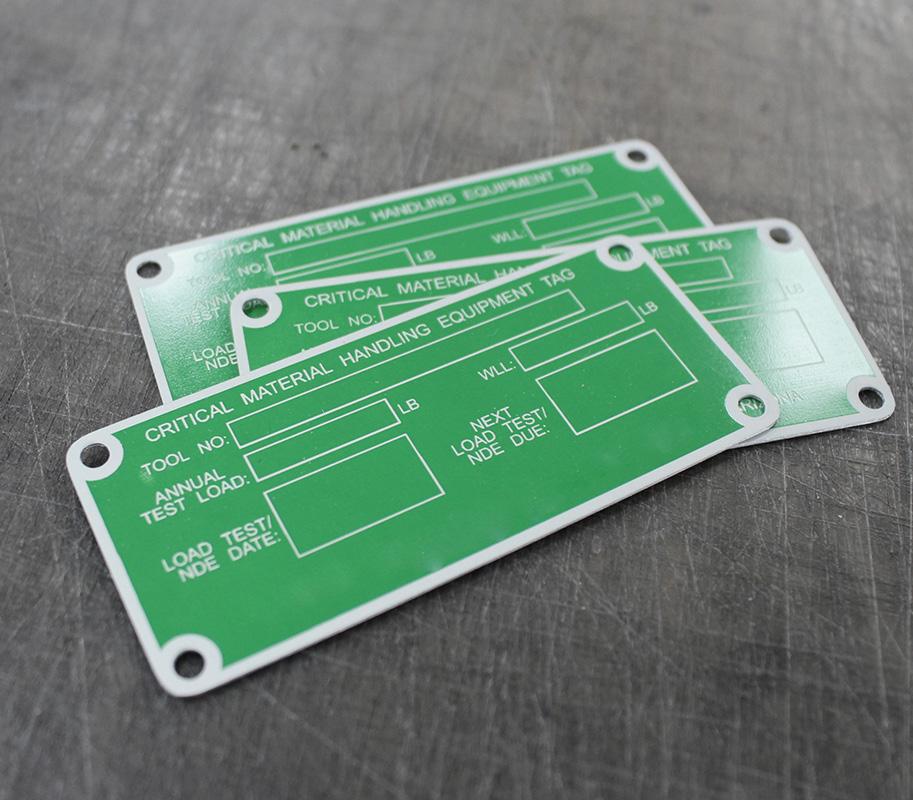






In the email and a Tuesday news release, Arcimoto promoted “new features and improvements” that include a steering system said to improve maneuverability and reduce steering effort on the threewheeled, handlebar-controlled EVs.
“As we begin first deliveries in 2023, we continue to focus on improving vehicle drive quality, manufacturing cost-down efforts and increasing our brand reach to grow both our consumer and commercial sales volume,” Jesse Fittipaldi, Arcimoto’s interim CEO, said in the release. “Our efforts will be directed at driving sales of FUV and Deliverator and lowering manufacturing costs on these products this year.”
A $12 million stock sale that netted $11.1 million about four weeks ago provided Arcimoto desperately needed capital just days after the company said it had halted production and needed money to avoid bankruptcy or closure.

Filings indicate Arcimoto spent some $4 million of the new funding to pay off a loan obligation, likely leaving around $7 million. How far that might carry the company is hard to say, and clearer indications might not come until its fourth-quarter report (as yet not scheduled) or other indication of current spending. Before a September restructuring that included layoffs and furloughs trimmed $20 million in annual expenses — and before a slight uptick in sales late last year — the company had been losing several million dollars a month.
Volocopter Receives Funding From Sumitomo Corporation, Establishes Regulatory Pathway In Japan
Volocopter, the pioneer of urban air mobility (UAM), announced today that Sumitomo Corporation, a Fortune 500 company and one of the largest trading companies in the world, invested in the company’s Series E funding round. They will also become a key strategic partner for entry into service in the Japanese market starting in 2025. Additionally, Japan Civil Aviation Bureau (JCAB) has accepted Volocopter’s application for concurrent type certification (TC) of the VoloCity aircraft in Japan. To celebrate these milestones, Volocopter will showcase a full-scale VoloCity static model for the first time at the Grand Front Osaka from March 8 to 12, to raise regional public awareness and acceptance of electric air taxis.
With the goal to launch air taxi services at the 2025 World Expo in Osaka, Japan, Volocopter said the Japanese aviation authority has accepted its application for concurrent type certification of the VoloCity eVTOL once the aircraft is certified in Europe.Volocopter Image

Volocopter is committed to flying its VoloCity air taxi at the 2025 EXPO Osaka Kansai. Today, a major regulatory milestone was achieved to make this ambitious goal a reality: the European Union Aviation Safety Authority (EASA) and JCAB announced that they have accepted Volocopter’s application process for concurrent TC of the fully electric VoloCity aircraft to fly commercially in Japan.Volocopter is currently pushing the envelope on flight testing and is on target to achieve certification for the VoloCity from EASA in 2024. As of now, the company is pursuing concurrent validation with three non-European civil aviation authorities: JCAB in Japan, Federal Aviation Administration (FAA) in the United States, and the Civil Aviation Authority of Singapore (CAAS) in Singapore. The company’s dedication to Japan dates back to 2018, when the country became one of the first to announce its commitment to bringing UAM to life. This includes a clear roadmap outlining the steps it needs to take to educate the public, introduce regulations, and launch commercial services. As the frontrunner for a Japan-based UAM launch,Volocopter has both the experience and expertise to work with local authorities to create a UAM ecosystem that establishes a safe and sustainable environment for UAM.

To further strengthen Volocopter’s local ties from a business perspective, Sumitomo Corporation became the latest Japanese investor and strategic partner in the company to join its list of partners, via the Series E funding round. Sumitomo Corporation possesses a keen understanding of the global business market, the energy and resource sectors, as well as Japanese market operations.This move diversifies Volocopter’s global partnerships to establish a UAM ecosystem.
Christian Bauer, Chief Commercial Officer of Volocopter, said: “Committing to fly and enter a market is no small feat, but for Volocopter and Japan, who are both pioneers in the UAM space, it just makes sense. Over the past few years, Volocopter has made significant progress toward becoming an integral part of the team that will bring UAM to life in Japan in 2025, thanks to partners like Sumitomo, EASA, and JCAB who share our vision. I cannot wait to see the public reaction to the VoloCity air taxi being unveiled in Osaka for the first time.”
The Federal Government Is Spending Record Amounts With Small Businesses, But There’s A Big Catch
Small businesses received a record $158.7 billion in federal contracts in fiscal year 2022 — but fewer small businesses than ever got a piece of the pie.
The data, from a recent study by HigherGov, which offers market intelligence and development tools for government contractors, showed the total dollar amount going to small businesses has grown significantly since 2010, but the number of businesses has continued to shrink. In 2010, the number of small businesses that received government contracts hit 121,270, according to the report. By 2022, it had been cut by more than half to just 58,681.
In fiscal 2022, about 23.2% of contracting dollars went to small businesses, according to the report, down from 24.1% in fiscal 2021 but higher than at any point since 2010.
“I think that part of it is that the government is measuring and benchmarking the wrong thing,” said Justin Siken, founder at HigherGov.
He noted the federal government is pretty generous when it comes to defining what a small business is, and that businesses under $25 million in revenue will qualify — not exactly what many people envision.
And the federal government’s emphasis on the total dollars going to small businesses incentivizes agencies to keep pushing more money to existing small-business partners instead of doing the harder work of pulling new business owners into the government contracting process.
Annual scorecards by the Small Business Administration give most agencies an ‘A’ for their efforts, despite the dwindling number of businesses participating, Siketh stressed.
“Putting more dollars in is the easiest thing you can do. It requires minimal effort to just throw more money at something. It takes actual effort for agencies to get new businesses involved,” he said.
The dwindling number of small businesses in the government contracting ecosystem is a well-known problem, and one that agency leaders have stressed they are trying to solve.

“We’ve seen unfortunately in the last 10 years some data points that are causing concern. We have seen the industrial base decrease 30% over the last 10 years, showing that less small businesses are doing business with the federal government,” SBA Administrator Isabel Guzman said in a conference call with reporters last year.
Guzman said the government has been working to include more smallbusiness owners, and that has included additional technical assistance for new contractors, higher priority tiers in certain government contracts and expanding the network of small-business centers across the country.


The SBA also released a new proposed amendment to its contracting regulations that would allow a small business that had previously worked as a federal subcontractor to use that experience to demonstrate a record of prior performance in bidding for contracts.
That effort dovetailed with a U.S. Department of Transportation rule proposed last year designed to get more small businesses into the pipeline from contracts stemming from the $1.5 trillion bipartisan infrastructure bill Congress passed in late 2021. Transportation Secretary Pete Buttigieg told The Playbook at the time that the new DOT rule also aims to expand the nation’s contracting capacity at a time when it is greatly needed.
But Siketh highlighted a number of structural barriers that keep smallbusiness contractors from participating in the system.The report found there are 400,000 active government contracting registrations, just not enough companies entering the process.
Some of the barriers include:
Not publishing all federal contracting opportunities publicly and in an easy to access way. While some platforms show some of the opportunities, many contracting opportunities are only shown to companies already on government contracting platforms. Publishing new opportunities globally on a limited basis could help new businesses see the opportunities.
The use of government-wide contracting vehicles. These contracts, which are created and bid on every five or more years, is supposed to make it easier for contracting officers to get the goods and services they need faster. But those long-term vehicles can lock out new business owners who missed out, and those contracts should offer more frequent “on ramps” to bring in new businesses, Siketh said.
Agency contracting forecasts. Currently agencies are required by law to offer “forecasts” for potential contracting opportunities to give business owners a heads up on potential contracts. But often, these reports are of poor quality or buried on a website, Siketh said, and are not helpful to anyone.
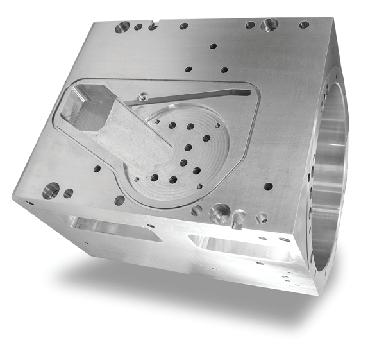
Other small-business contracting goals seem to be fizzling out too, according to the HigherGov report. About $26.1 billion in prime contract awards went to women-owned small businesses, slightly above the $26 billion in 2021 but below the $26.3 billion in 2020. But, as a share of overall dollars, it’s the third year in a series of declines, coming in at 16.4% of spending compared to 18.9% in 2019.
The total dollars going to Black-owned small businesses peaked in 2018 at $10.5 billion, or about 8.5% of contracts awarded to small businesses, according to HigherGov. Since then, the total percent has declined to 6.4%, while total dollars dropped and then slowly increased to $10.2 billion.
So what can small businesses do to win contracts? The report lays out some steps, including building partnerships with established, larger contractors who will then need to recruit small-business subcontractors and to target “easier” agencies and services and bid early and often for opportunities as they come up.





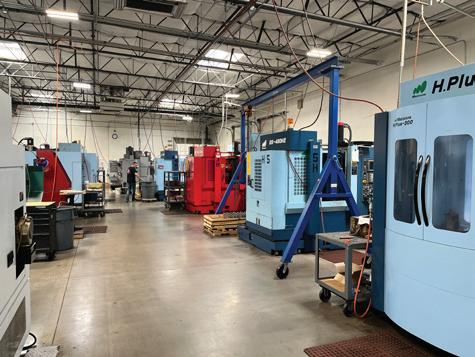










We www.techfin.net
Industry Knowledge
GE Creating Battery That Lasts Almost Forever

NISKAYUNA — Researchers at General Electric Co. are working to develop next-generation batteries that can last virtually forever and resist corrosion through metallic regeneration.
The new batteries are being developed at GE Research in Niskayuna, which is GE’s main research lab, as part of a Department of Defense project to create more long-lasting and durable batteries.
DARPA has a program called Morphogenic Interfaces, or MINT, that is seeking new metals technologies that mimic human tissue that can repair itself and regenerate. Such a technology is known as morphogenesis, GE says.
One of the two grants that GE and its partners were awarded is for the creation of what GE calls the IMMORTAL battery that stands for InterMetallic MORphogen Tailored Activity Lithium. That’s the battery that will last virtually forever.
The IMMORTAL project is being led by Joseph Shiang, a principal scientist at GE Research who works in the Ceramics Lab at GE Research.
“Biological systems extend their lifetime by using complex chemical processes and feedback to keep components from failing, but what if we could arrange the chemical processes in simpler, non-living systems, like batteries, to preclude degradation and extend life?”
Are you ready to implement or upgrade your Quality Management System to the new ISO 9001:2015 or AS9100D / ISO 9001:2015 Standard, AS9110C or AS9120B?
Special Packages available, take advantage of 20 plus years’ experience implementing and auditing quality management systems for commercial and aerospace companies!

Bretta Kelly, President and Owner of BMSC, LLC www.businessmsc.com has proven, copy written templates for ISO 9001:2015, AS9100D / ISO 9001:2015, AS9110C / ISO 9001:2015 and AS9120B / ISO 9001:2015 Standards with more than 30 companies upgraded and certified with zero to one finding results to date in their upgrade audits!


Packages Available:
Complete Electronic QMS System/Templates and 4 hours consulting – Manual, Policy, System Procedures, Work Instruction / Flow charts for some processes, internal audit program, management review program (including forms), competency / training program, objectives training template, risk training and how to document a corrective action training PowerPoint’s - $3,500

Complete Electronic QMS System/Templates and online webinar of how to complete –Manual, Policy, System Procedures, Work Instruction / Flow charts for some processes, internal audit program, management review program (including forms), competency / training program, objectives training template, risk training and how to document a corrective action training PowerPoint’s - $2,500
Do you need Quality Management System Software? Bretta Kelly is also President of CIS WWSG, LLC and is now offering the $3,500 Templates for FREE with purchase of CIS Software! www.cissoftware.com. CIS Software costs $5,000 upfront (one time) and $385/month license and server fees for UNLIMITED users, request a demo today! Testimonial from BMSC Clients featured in the A2Z Manufacturing Magazine who have taken advantage of the BMSC Templates for successful upgrades:
Bretta, I wanted to email you and let you know that because of the help of yourself and Debbie we completed our audit to the new revision with no findings! :) We very much appreciate all of the help that you both did for us and will recommend your company to anyone looking to get certified. Your system really makes it easy for companies like ours to stay organized and compliant to the guidelines. Kristie McKee, Gibbs Precision Machine
Shiang said. “That’s the essence of what we’re creating.”
GE is working on the IMMORTAL battery with the Massachusetts Institute of Technology, the University of Michigan, the University of California Santa Barbara, and Storagenergy, a leader in advanced lithium battery technologies that is based in Salt Lake City, Utah.
The other $5 million project is called Morphogenic Barrier Technologies and is focused on developing aluminum battery layers that can regenerate when facing corrosive elements.

“When someone gets a cut, you might apply an antibiotic ointment to avoid infection and accelerate the healing of that wound. What we’re innovating is more proactive,” said Sreekar Karnati, a lead engineer in GE Research’s Advanced Manufacturing Lab. “We’re creating a protective surface layer on aluminum alloys that can self-heal, or regenerate, instead of letting the metal pit and degrade.”
Government grants help fund work on major technological breakthroughs at GE’s Niskayuna lab, which has roughly 1,200 engineers and scientists. Those new technologies often make their way into everyday commercial technologies.
GE says the new durable batteries could eventually be used in cars, airplanes and major pieces of infrastructure.
GE is working with the University of Virginia nd Brigham Young University on the grant, along with a company called DNV.



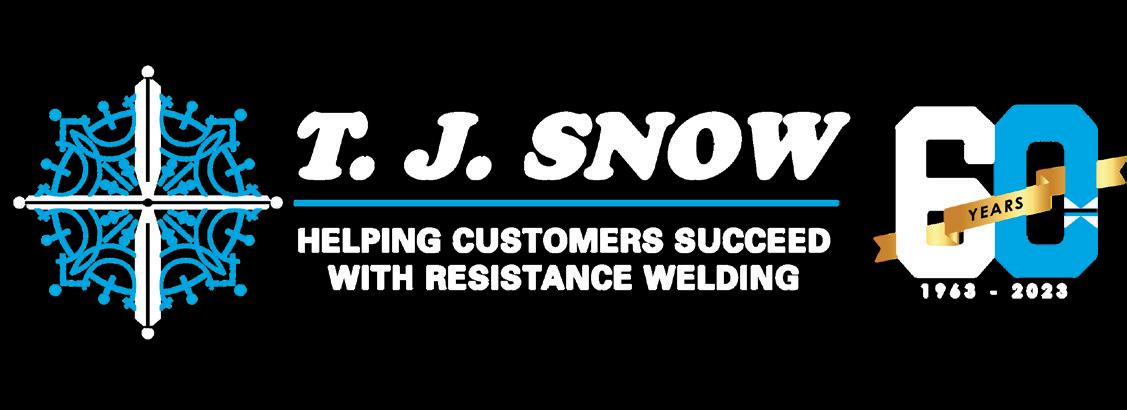
3,000+ Waterjet Parts Are Just a Click Away
We are an authorized distributor of genuine OEM parts from Flow, H2O Jet and KMT
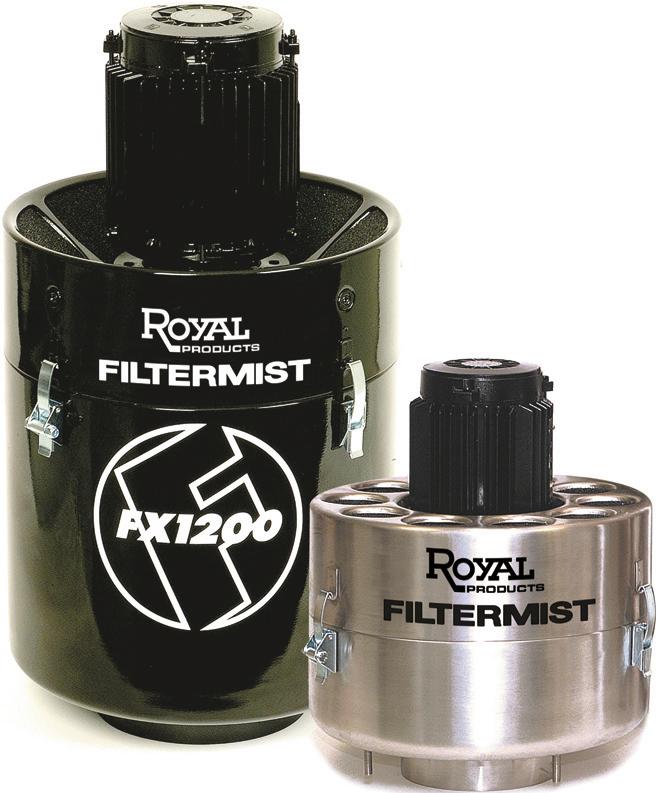
From cutting heads, on/off valves, and orifices to ROCTEC nozzles and more, most parts are in stock, and ordering is fast and easy.
Visit store.barton.com or call (800) 741-7756 to speak with a parts expert.
FREE SHIPPING EVERY DAY on qualifying online orders at store.barton.com Any
Contracts
Allied Systems Co.,* Sherwood, Oregon, is awarded a $27,934,305 cost-plus-fixed-fee, indefinite-delivery/indefinite-quantity contract for engineering services support, integrated logistics support, software support, installation support and obsolescence support to the Knuckleboom Crane System. Allied will be awarded a task order for engineering and logistics support services at the time of contract award, which will satisfy the minimum contract guarantee of $500. Work will take place in Philadelphia, Pennsylvania (70%); and Sherwood, Oregon (30%). Work is expected to be complete by February 2029. Fiscal 2023 other procurement (Navy) funds in the amount of $5,000 will be obligated at time of award and will not expire at the end of the current fiscal year. This contract was not competitively procured via the System for Award Management website in accordance with 10 U.S. Code 2304(c)(1) — only one responsible source and no other supplies or services will satisfy agency requirements.The Naval Surface Warfare Center, Philadelphia Division, Philadelphia, Pennsylvania, is the contracting activity (N64498-23-D-4001).
The Lighthouse for the Blind Inc.,** Seattle, Washington, has been awarded a maximum $7,512,750 firm-fixed-price, indefinite-delivery/ indefinite-quantity contract for one quart water canteens. This is a three-year contract with no option periods. The ordering period end date is Feb. 14, 2026. Using military service is Army. Type of appropriation is fiscal 2023 through 2026 defense working capital funds. The contracting activity is the Defense Logistics Agency Troop Support, Philadelphia, Pennsylvania (SPE1C1-23-D-B007).
General Dynamics NASSCO-Bremerton, Bremerton, Washington, was awarded a $43,066,073 firm-fixed-price contract (N4523A-23-C-0561) for the maintenance, modernization, and repair of the USS Sampson (DDG 102) in a Chief of Naval Operations availability. This contract includes options which, if exercised, would bring the cumulative value of this contract to $43,139,448. Work will be performed in Everett, Washington, and is expected to be completed by September 2023. If all options are exercised, work will continue through September 2023. Fiscal 2023 other procurement (Navy) funds in the amount of $40,853,575 (95%); fiscal 2023 operations and maintenance (Navy) funds in the amount of $1,907,116 (4%); fiscal 2022 other procurement (Navy) funds in the amount of $167,840 (less than 1%); and fiscal 2023 working capital funds in the amount of $137,542 (less than 1%) will be obligated at time of award, of which $1,907,116 (4%) will expire at the end of the current fiscal year.This contract was not competitive procured in accordance with 10 U.S. Code 2304(c)(3) — industrial mobilization; engineering, developmental, or research capability; or expert services. The Northwest Regional Maintenance Center, Everett, Washington, is the contracting activity. 4523A-23-C-0561). (Awarded Feb. 13, 2023)
General Atomics Aeronautical Systems Inc., Poway, California, is awarded a $34,232,310 modification (P00001) to a firm-fixed-price, cost-plusfixed-fee order (N0001923F0021) against a previously issued basic ordering agreement (N0001922G0006). This modification procures eight mobile ground control stations and six ground data terminals in support of successful operational capability of the Marine Air Ground Task Force Unmanned Aircraft System Expeditionary Medium Altitude Long Endurance MQ-9A Block 5 Reaper air vehicles and ground control








